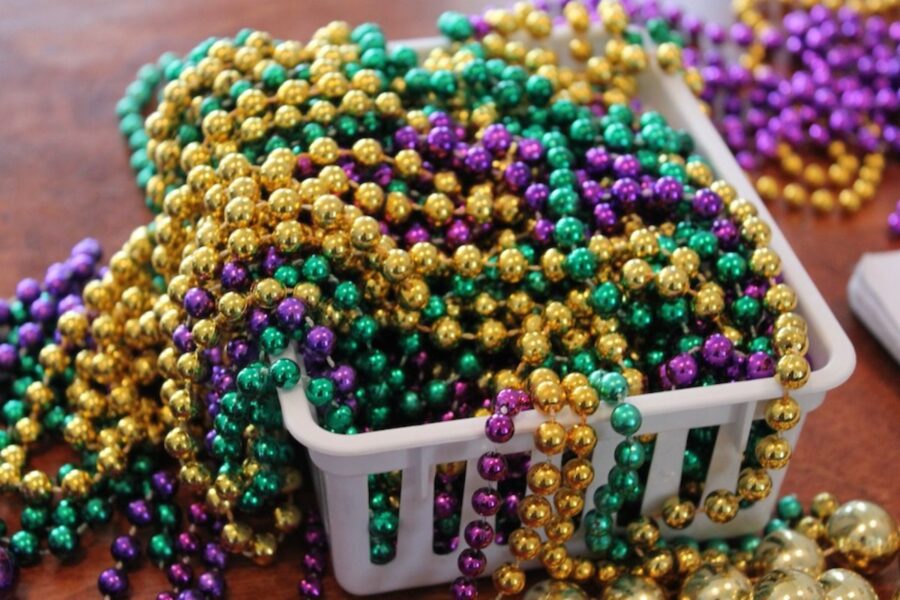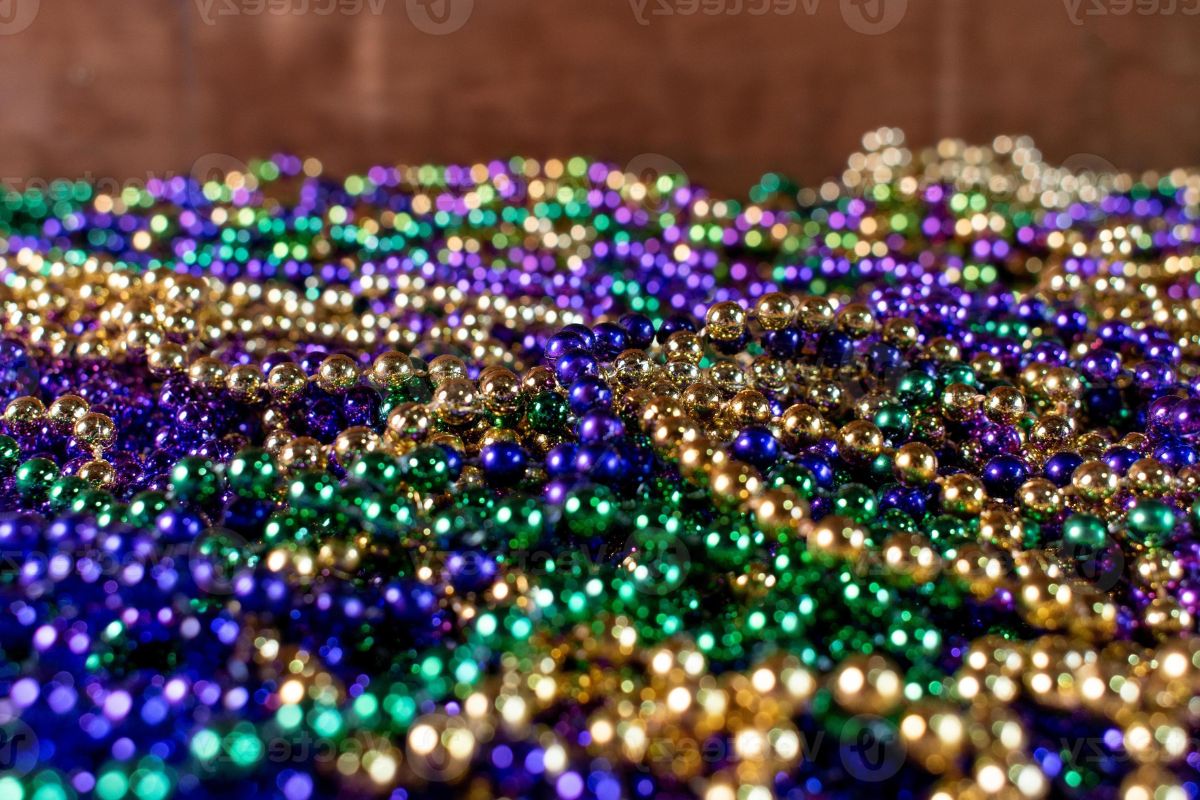Shocking Revelations Mardi Gras Beads: Recent research conducted at the Dauphin Island Sea Lab has shed light on the unsuspected risks associated with Mardi Gras beads.
The study, which originated from concerns regarding environmental contamination, has revealed alarming findings that have sparked a wave of concern among experts.
With implications for both the environment and public health, the publication of these findings has raised crucial questions about the impact of these festive trinkets on our water systems.
As safety measures are being considered and public awareness grows, the implications of this research are far-reaching and deserving of closer scrutiny.
Key Takeaways
- Mardi Gras beads contain harmful metals like lead and arsenic.
- Discarded beads pose a threat to water bodies and aquatic life.
- Public health risks from contaminated water necessitate caution.
- Promoting safe handling, disposal, and reuse can mitigate environmental harm.
Mardi Gras Beads Warning
During the Mardi Gras season, a grave warning about the environmental risks posed by Mardi Gras beads has been issued by scientists at the Dauphin Island Sea Lab in Mobile, Alabama. Dr. Ruth Carmichael, a senior marine scientist, along with her son Thomas Carmichael, have brought attention to the concerning findings related to Mardi Gras beads.
These colorful beads, often thrown and worn during the festive celebrations, are made of plastic materials that can have detrimental effects on the environment. The issue arises from the beads being discarded or lost during the festivities, eventually making their way into water bodies such as rivers, lakes, and oceans.
Once in these aquatic environments, the beads can break down into microplastics, posing a threat to marine life and ecosystems. The warning issued by the scientists highlights the importance of being mindful of the environmental impact of Mardi Gras beads and encourages the adoption of more sustainable alternatives to protect our ecosystems from plastic pollution.
The Study’s Origin and Purpose
Thomas Carmichael’s exploration into the composition and potential environmental impact of Mardi Gras beads was ignited by a childhood science project, catalyzing a thorough investigation into the origins and implications of these festive trinkets. Growing up with a scientist parent, Carmichael’s curiosity was piqued when he noticed paint flakes and dirt on the beads, prompting a deeper dive into the elements present on the beads and their potential environmental consequences.
- Seventh-grade science project sparks curiosity
- Scientist parent influences investigative nature
- Observation of paint flakes and dirt on beads triggers study
- Focus on elements present on beads and their environmental impact
Carmichael’s study aimed to uncover the hidden dangers that these seemingly harmless beads might pose to the environment, shedding light on a topic often overlooked during the joyous celebrations of Mardi Gras. Through meticulous research and analysis, Carmichael sought to raise awareness and spark conversations about the need for more sustainable practices in the production and disposal of Mardi Gras beads.
Findings and Publication
The comprehensive study conducted by the Carmichaels over a five-year period composition of Mardi Gras beads, with a particular emphasis on the presence and potential release of lead, arsenic, chromium, copper, and barium, culminating in the recent publication of their findings in the esteemed Gulf and Caribbean Research Journal. The research revealed that the quantity of metals released from the beads varied depending on their color and the intensity of handling. Below is a table summarizing the key findings from their publication:
| Metal | Presence in Beads | Potential Release |
|---|---|---|
| Lead | High | Yes |
| Arsenic | Low | Yes |
| Chromium | Moderate | No |
| Copper | High | Yes |
| Barium | Low | Yes |
The publication sheds light on the potential risks associated with Mardi Gras beads, especially in terms of heavy metal exposure through direct contact. These findings have significant implications for public health and environmental awareness concerning the use and disposal of such festive items.
Environmental Impact and Water Systems
Investigating the repercussions of Mardi Gras beads on environmental integrity and water systems reveals concerning implications for potential contamination of natural water reservoirs. The study demonstrated that shaking a single beaded necklace in water released metals at concentrations deemed unsafe for drinking water.
The Carmichaels have expressed valid concerns about the beads’ impact on water systems, as discarded beads have the potential to end up in drains and water supplies. This could introduce toxic elements into natural water areas, posing risks to aquatic life and potentially affecting human health.
- Beaded necklaces release unsafe concentrations of metals into water.
- Discarded beads may contaminate drains and water supplies.
- Introduction of toxic elements could harm aquatic life.
- Potential risks to human health from contaminated water sources.

ALSO READ: Alabama Power Surprises Customers With $5 Rebate
Safety Measures and Public Awareness
Examining the safety measures and public awareness surrounding Mardi Gras beads reveals crucial steps advocated by the Carmichaels to mitigate potential risks associated with bead handling and disposal. The Carmichaels emphasize the importance of washing hands after contact, avoiding putting beads in mouths, and supervising children with beads to prevent any harm.
Additionally, they promote responsible disposal practices, such as participating in bead reuse programs, to reduce the environmental impact of discarded beads. By highlighting these safety measures and advocating for public awareness, the Carmichaels aim to ensure that Mardi Gras celebrations are not only enjoyable but also safe and environmentally conscious.
It is essential for individuals to heed these recommendations and play an active role in safeguarding their well-being and the environment during festive occasions like Mardi Gras. Ultimately, increased awareness and adherence to these safety measures can contribute to a safer and more sustainable celebration for all participants.
Conclusion Of Shocking Revelations Mardi Gras Beads
In conclusion, the research conducted at Dauphin Island Sea Lab has shed light on the environmental risks associated with Mardi Gras beads.
The findings underscore the importance of implementing safety measures to protect water systems from contamination.
Public awareness and responsible disposal of these beads are crucial steps towards mitigating their negative impact on the environment.
It is imperative that individuals, communities, and policymakers take proactive measures to address this pressing issue.

